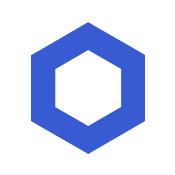When evaluating the giants of the blockchain realm, Solana and Chainlink stand out not just for their technological innovation but for their fundamentally different roles in the ecosystem—Solana as a high-speed blockchain platform and Chainlink as a decentralized oracle network. While Solana aims to process transactions at lightning-fast speeds supporting decentralized apps and markets, Chainlink focuses on providing reliable, tamper-proof data feeds essential for smart contract execution across multiple blockchains. This comparison explores their architectures, use cases, performance metrics, and ideal user profiles, giving crypto enthusiasts and investors a comprehensive understanding of how each platform contributes uniquely to the decentralized landscape.
Short on time? Jump to Solana vs Chainlink Comparison
Understanding Solana and Chainlink ?
Solana was conceived in 2017 by Anatoly Yakovenko to address the scalability issues faced by existing blockchains like Bitcoin and Ethereum. Its primary goal was to develop a decentralized network capable of matching the performance of a single node, which led to the creation of groundbreaking technologies like Proof of History (PoH) and Tower BFT, enabling it to support over 50,000 transactions per second (TPS). Solana’s architecture is designed to maximize throughput and minimize latency, making it suitable for high-frequency decentralized applications and markets.
Chainlink, launched in 2017 by Sergey Nazarov and Steve Ellis, operates as a decentralized oracle network that connects smart contracts with real-world data. Its core purpose is to ensure that smart contracts can securely and reliably interact with external data sources, APIs, and payment systems. Chainlink’s unique ability to provide tamper-proof, off-chain data is vital for DeFi, insurance, and other industry-specific applications that rely on accurate external information. Unlike Solana, Chainlink does not process transactions but instead focuses on data integrity and cross-chain interoperability.
While Solana’s technology is optimized for speed and scalability, Chainlink’s strength lies in its decentralized data feeds that enable smart contracts to execute based on real-world inputs. Both platforms address distinct challenges within the blockchain ecosystem but are increasingly interconnected as Chainlink’s oracles are integrated into Solana-based applications, exemplifying their complementary roles.
Understanding these foundational differences helps investors appreciate why Solana’s infrastructure is suited for high-performance DApps and markets, whereas Chainlink’s decentralized oracles are crucial for trust and data security across multiple blockchains and DeFi projects.
Key Differences Between Solana and Chainlink
Core Functionality
- Solana: Solana is a high-performance blockchain platform designed to support decentralized applications and crypto markets with exceptional transaction throughput. Its architecture emphasizes scalability, enabling it to process tens of thousands of TPS, making it ideal for data-intensive DApps and real-time markets.
- Chainlink: Chainlink functions as a decentralized oracle network that supplies smart contracts with external data inputs. Its primary role is to ensure data integrity and security across blockchains, enabling complex smart contract logic that depends on real-world information.
Technology Focus
- Solana: Solana’s innovations, including Proof of History and Tower BFT, are engineered to maximize throughput and minimize latency, supporting high-frequency trading, gaming, and other data-heavy applications with minimal delays.
- Chainlink: Chainlink employs multi-layered decentralized oracles and secure data aggregation protocols to provide reliable external data, crucial for DeFi applications, cross-chain interoperability, and automated contractual execution.
Use Cases
- Solana: Solana is best suited for decentralized exchanges, NFT marketplaces, gaming, and other applications requiring high-speed transactions and scalability.
- Chainlink: Chainlink underpins DeFi protocols, insurance, tokenized assets, and cross-chain bridges by providing accurate, tamper-proof data feeds and facilitating interoperability.
Consensus & Security
- Solana: Solana uses a Proof of Stake consensus mechanism combined with Proof of History to optimize performance while maintaining network security through validator staking and slashing mechanisms.
- Chainlink: Chainlink relies on a decentralized network of oracles and node operators, with security achieved through economic incentives, reputation systems, and multi-source data aggregation to prevent data manipulation.
Performance Metrics
- Solana: Solana supports over 50,000 TPS with block times as low as 400ms, making it one of the fastest blockchains available today.
- Chainlink: Chainlink’s performance is measured by the reliability, decentralization, and security of its oracle networks, capable of aggregating data from hundreds of sources to deliver high-integrity inputs for smart contracts.
Solana vs Chainlink Comparison
| Feature | ✅ Solana | ✅ Chainlink |
|---|---|---|
| Primary Role | High-speed blockchain platform for DApps and markets | Decentralized oracle network for secure data feeds |
| Transaction Speed | 50,000+ TPS | Not applicable (focused on data integrity) |
| Main Use Cases | DeFi, gaming, NFTs, high-frequency trading | DeFi, cross-chain interoperability, asset tokenization |
| Consensus Mechanism | Proof of Stake + Proof of History | Decentralized oracle consensus with economic incentives |
| Performance Focus | Speed, scalability, low latency | Data security, reliability, cross-chain compatibility |
| Ideal For | Developers building high-performance decentralized apps | Smart contract developers needing secure, external data inputs |
Ideal For
Choose Solana: Solana is ideal for developers and projects demanding high throughput and low latency, such as gaming platforms, decentralized exchanges, and real-time markets.
Choose Chainlink: Chainlink is best suited for DeFi protocols, insurance, and cross-chain applications that require secure, reliable external data.
Conclusion: Solana vs Chainlink
While Solana and Chainlink serve different core functions within the blockchain ecosystem—one as a high-performance blockchain infrastructure and the other as a secure data provider—they are both pivotal to the evolution of decentralized applications. Solana’s technological innovations enable it to support high-speed, scalable DApps that can handle thousands of TPS, making it a prime choice for projects that prioritize performance and user experience.
Conversely, Chainlink’s decentralized oracle network addresses the critical need for trustworthy external data, which is essential for the security and reliability of complex smart contracts across multiple blockchains. Their integration often complements each other, with Chainlink oracles powering Solana-based DeFi applications that require real-world data inputs, exemplifying their symbiotic relationship in the broader DeFi landscape.






